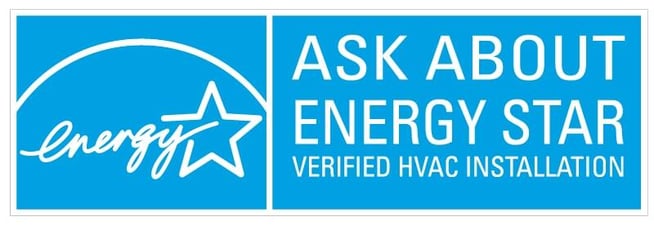ENERGY STAR® Certification is a program developed by the Environmental Protection Agency (EPA) in the United States to identify and promote energy-efficient products and practices. It is a trusted symbol that signifies that a product or system meets strict energy efficiency guidelines set by the EPA.
For HVAC systems, ENERGY STAR® Certification ensures that your heating, ventilation, and air conditioning system operates at peak efficiency, consuming less energy and reducing greenhouse gas emissions. This certification is important because it helps you save money on your energy bills while also protecting the environment.

Benefits of ENERGY STAR® Certification for HVAC Systems
There are several benefits to having an HVAC system that is ENERGY STAR® certified. Firstly, it can significantly reduce your energy consumption, leading to lower utility bills. ENERGY STAR® certified HVAC systems are designed to be more efficient, using less energy to heat or cool your home.
Secondly, ENERGY STAR® certified HVAC systems provide better comfort and air quality. These systems are designed to distribute air more evenly throughout your home, eliminating hot or cold spots. Additionally, they often include advanced filtration systems that can improve indoor air quality by reducing airborne pollutants and allergens.
Lastly, by choosing an ENERGY STAR® certified HVAC system, you are contributing to a cleaner environment. These systems produce fewer greenhouse gas emissions, helping to combat climate change and reduce your carbon footprint.
Requirements for ENERGY STAR® Certification
To achieve ENERGY STAR® certification, HVAC systems must meet certain requirements set by the EPA. These requirements vary depending on the type of system, such as central air conditioners, heat pumps, or furnaces. Generally, the requirements focus on energy efficiency, performance, and environmental impact.
For example, central air conditioners must have a Seasonal Energy Efficiency Ratio (SEER) of 15 or higher and an Energy Efficiency Ratio (EER) of 12.5 or higher. Heat pumps must have a Heating Seasonal Performance Factor (HSPF) of 8.5 or higher and an EER of 12 or higher. Furnaces must have an Annual Fuel Utilization Efficiency (AFUE) of 95% or higher.
Meet the metrics
Heating and air-conditioning products pursuing ENERGY STAR certification are evaluated for how well they meet a handful of efficiency measurements, including their heating seasonal performance factor (HSPF), seasonal energy efficiency ratio (SEER), and energy efficiency ratio (EER). To fully understand the weight behind the ENERGY STAR label, let’s discuss what each term means.
HSPF measures a heat pump’s efficiency during the heating season and is calculated by dividing the total heating output (measured in British Thermal Units, or BTUs) by the total kilowatt-hours (kWh) of energy consumed during the same period.
SEER is calculated with the same formula as HSPF but measures efficiency during the cooling season. In a controlled environment, the tested heat pumps operate in a simulated cooling season with temperatures ranging from 65 to 104° F.
EER measures a heat pump’s cooling efficiency at peak outdoor conditions. The laboratory uses a simulated 95° F outdoor temperature and 50 percent humidity with an 80° F set point. BTUs are then divided by watts of energy used to find the EER.
All product testing must be performed in a lab recognized and approved by the EPA, and results must be certified and submitted by an EPA-approved certification body. With each of these measurements, the higher the rating, the better. Heat pumps can be marketed as ENERGY STAR certified – and use the logo – if they meet specific measurement requirements.
In addition to these performance requirements, HVAC systems must also meet certain installation and maintenance guidelines to ensure optimal energy efficiency and performance.
How to Ensure Your HVAC System Meets ENERGY STAR® Requirements
To ensure that your HVAC system meets ENERGY STAR® requirements, it is important to work with a qualified HVAC contractor who is knowledgeable about energy-efficient systems. They can help you choose the right equipment that meets the certification requirements and ensure proper installation and maintenance.
Regular maintenance is also crucial to keep your HVAC system operating efficiently. This includes cleaning or replacing filters, checking refrigerant levels, and inspecting and cleaning coils. Following manufacturer guidelines and scheduling annual maintenance checks can help you maintain ENERGY STAR® certification and maximize energy savings.
Conclusion: Achieving Energy Efficiency with ENERGY STAR® Certification
ENERGY STAR® certification for HVAC systems is crucial for achieving energy efficiency, reducing energy costs, and minimizing environmental impact. By choosing an ENERGY STAR® certified system and meeting the certification requirements, you can enjoy the benefits of lower utility bills, improved comfort, and cleaner air.
To ensure your HVAC system meets ENERGY STAR® requirements, consult with a qualified HVAC contractor and prioritize regular maintenance. By taking these steps, you can contribute to a more sustainable future while enjoying the comfort and savings provided by an energy-efficient HVAC system.
If you live in the Delaware Valley/Greater Philadelphia area and would like to find comfort within your home, visit our website or give us a call at 215 - 245 - 3200 to learn more.




